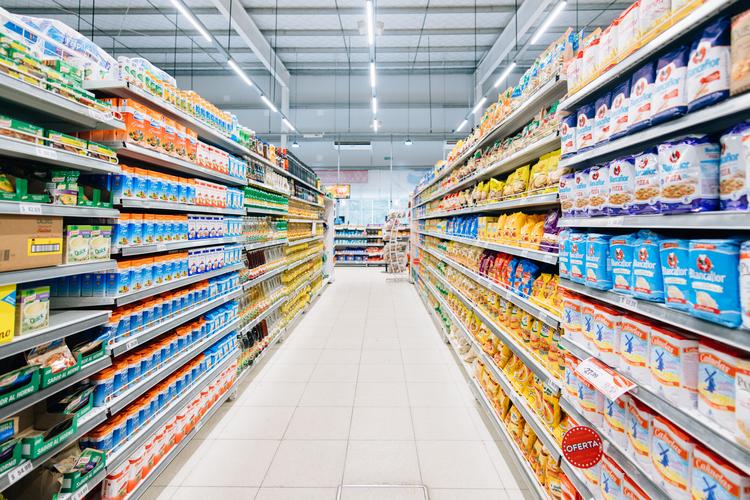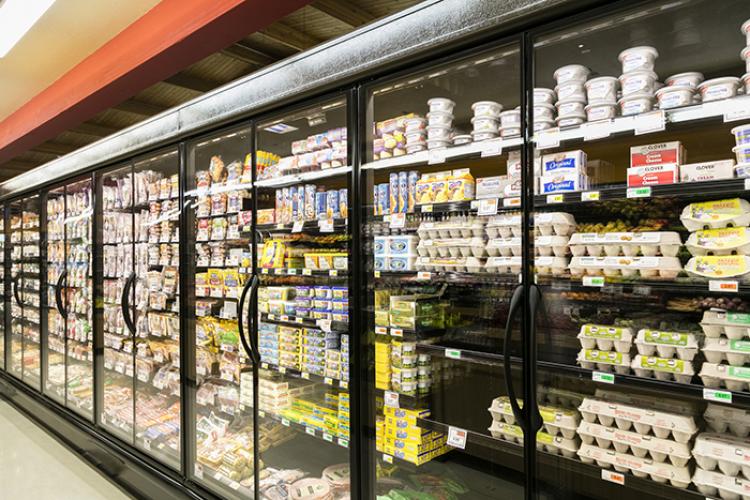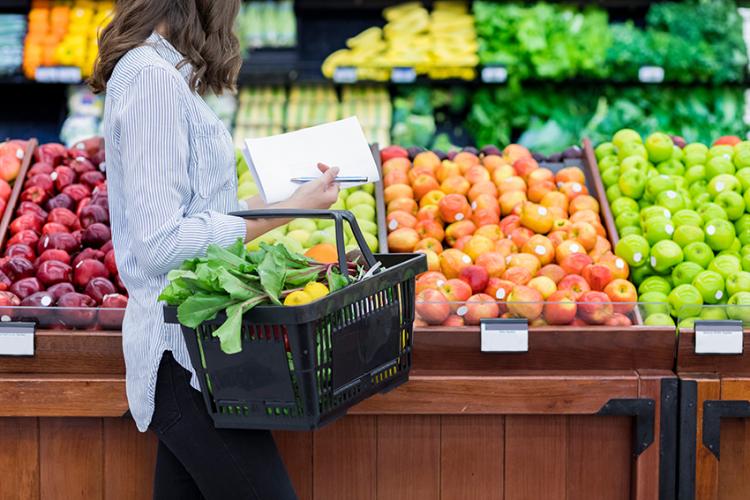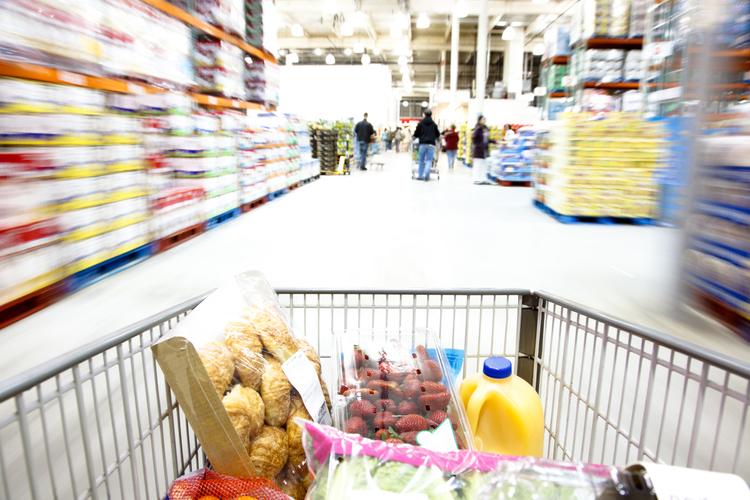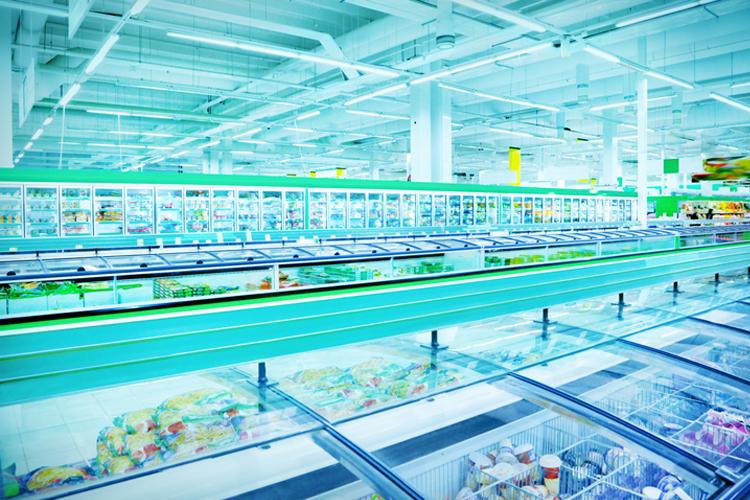UK Grocery Chain Feeds Sustainability Plan with LED Overhaul
UK Grocery Chain Feeds Sustainability Plan with LED Overhaul
With massive refrigeration units and large lighting fixtures meant to entice shoppers, many supermarkets aren’t known for being energy conscious.
According to the U.S. Environmental Protection Agency’s (EPA) ENERGY STAR® program, an average U.S. supermarket having 50,000 square feet will spend $200,000 a year in energy costs, which results in 1,900 tons of CO2 being emitted into the atmosphere. For comparison, that’s the same as 360 vehicles!
With an estimated 50 percent of energy usage coming from refrigeration and lighting alone, many supermarkets are starting with this low-hanging fruit to begin making an immediate impact on their total carbon footprint and bottom line.
Energy-efficiency improvements may even be essential to a supermarket’s continued success and the quality of the customer’s experience, cites the EPA. Too much cold air escaping from refrigerated displays, for example, may decrease comfort for shoppers and employees alike, and require simultaneous space heating and a significant overuse of energy.
At the same time, replacing traditional fluorescent and high-pressure sodium lamps with more efficient lighting options, including LEDs, is another opportunity grocers are encouraged to examine.
While government and regulatory accountability differs greatly around the world when it comes to reducing energy use, many supermarkets are taking it upon themselves to do what’s right for associates, consumers, and the environment by implementing their own sustainability plans—and holding themselves accountable.
And some are doing even more.
Setting a bold sustainability strategy
Sainsbury’s is the second largest retail grocer in the U.K., with more than 600 supermarkets and environmental goals to match its scale. The chain set out to become a leader in environmentally responsible business practices when it unveiled its 20x20 Sustainability Plan, a series of aggressive goals focusing on reduction of waste, energy and water.
Sainsbury’s strong commitment to living out its core values was central to its decision to completely revamp its sustainability plan. The chain also sought alignment with the United Nations’ Sustainability Development Goals, which aim to halve per capita food waste by 2030 at the retail and consumer levels and encourage residential and commercial building owners to apply technologies that reduce overall energy consumption and CO2 emissions.
Already, Sainsbury’s has achieved remarkable results with zero waste to landfills since 2013, $10 million invested over a five-year period in helping customers reduce waste, and the chain now uses one billion fewer liters of water annually than it did in 2005.
Sainsbury’s has also set the bar high to cut carbon emissions by 30% compared to 2005 baseline levels. To date, the company has eliminated more than 7,992 tons of CO2 emissions simply by introducing an employee engagement program that encourages its more than 162,000 associates to be extra mindful of making small changes that can add up to big savings, such as closing refrigerator doors, turning down ovens and being sure not to pack freezers too full. All of this and more was undertaken with the goal of becoming the U.K.’s ‘Greenest Grocer.’
Sainsbury’s is also experimenting with solar panels to offset its energy usage, is exploring more efficient refrigeration units and has begun to test new technologies in the transport of foods to prevent waste. The supermarket is also upgrading all stores with LED lighting.
In fact, 49% of Sainsbury’s real estate, including stores, distribution centers and service locations, had already made the switch to LED. The grocer is installing approximately 250,000 additional LED fixtures in another 450 stores, with help from Current. Upgrading its lighting alone is expected to cut Sainsbury’s total energy use by 58% by end of 2020 and reduce greenhouse gas emissions by more than 3% annually, marking a significant contribution to overall sustainability objectives.
And these efforts are paying off. Sainsbury’s is already using 11.6% less electricity than it did in 2005, despite growing operations by 54%.
Accountability is key
Today, many organizations claim, “we are committed to operating in a sustainable manner for the betterment of the communities in which we operate” or are sure to mention “we use sustainably sourced materials.” However, with the broadening reach of social media and the scrutiny that can now be easily leveled by any number of ecologically minded watchdog groups, it is increasingly critical that such promises amount to more than words on paper.
In short, organizations must hold themselves accountable before someone else does.
Sainsbury’s is doing just that by being completely transparent with its stakeholders, customers and employees. Its goals, key performance indicators and methods of measurement are clearly stated online and officials are sure to include updates and metrics not only in the company’s annual report, but also on a quarterly basis.
On its ambitious journey, Sainsbury’s has found the keys to success when it comes to truly living its environmental pledge. The chain is committing the capital to make improvements possible, and is tapping into its most valuable resource—its associates—to help the cause and implement concrete ideas to reduce waste, water use and energy consumption across the board.
And through key partnerships, Sainsbury’s is also positioning itself for future integrations and smart technologies that will take the supermarket to 2021 and beyond.
Talking to store owners about LED
Grocery stores represent a significant opportunity to reduce energy use.
Discussing new technology options with any potential client all comes down to addressing their pain points. Here are a few ways to get the attention of supermarket owners:
-
Bigger profit margins: Grocery store profit margins are very thin at around 1%. ENERGY STAR estimates that $1 in energy savings is equivalent to increasing sales by $59.
-
Straightforward savings: LED can achieve a 50% lighting energy reduction in many cases compared to conventional options. It represents an excellent starting point for any sustainability strategy.
-
Enhanced customer experience: LED lighting not only saves energy, it can enhance the customer experience—even sales—by adding extra pops of illumination for key displays.
It is also worth noting that actual change and real progress start with the private sector, especially in areas of the world where governments and regulatory bodies are not enforcing change. Companies of all types must take the initiative to put goals in place, make plans to meet them and, ultimately, hold themselves accountable.
Like Sainsbury’s, organizations must work with trusted partners who will look out for these interests, scale plans to meet the needs of the organization, integrate efforts and apply the latest technologies to put them on the path to significantly reducing energy use.


